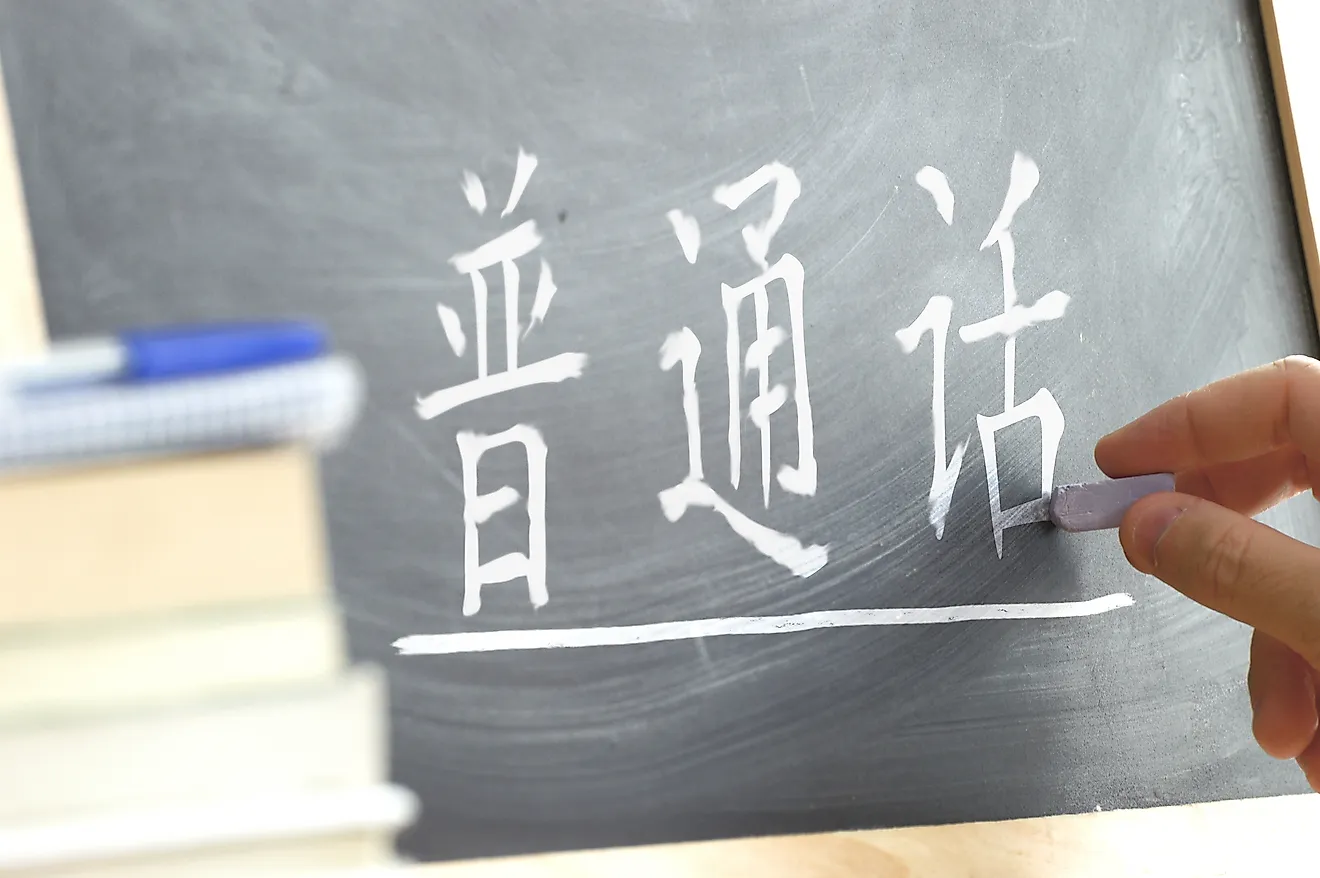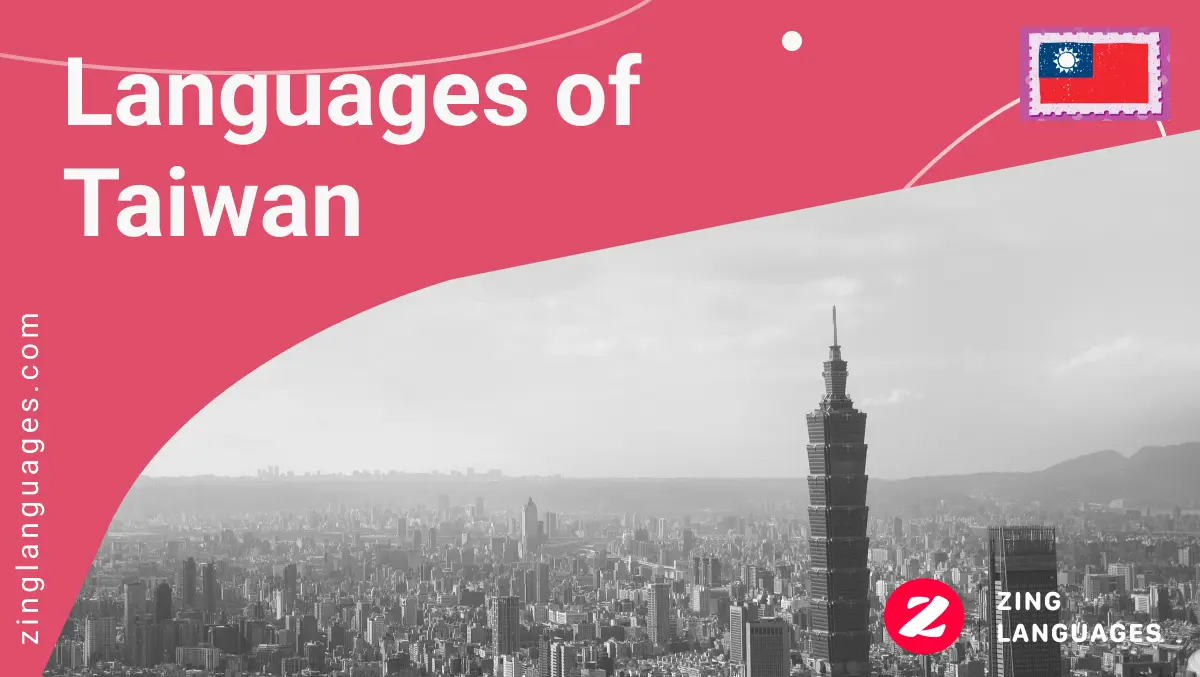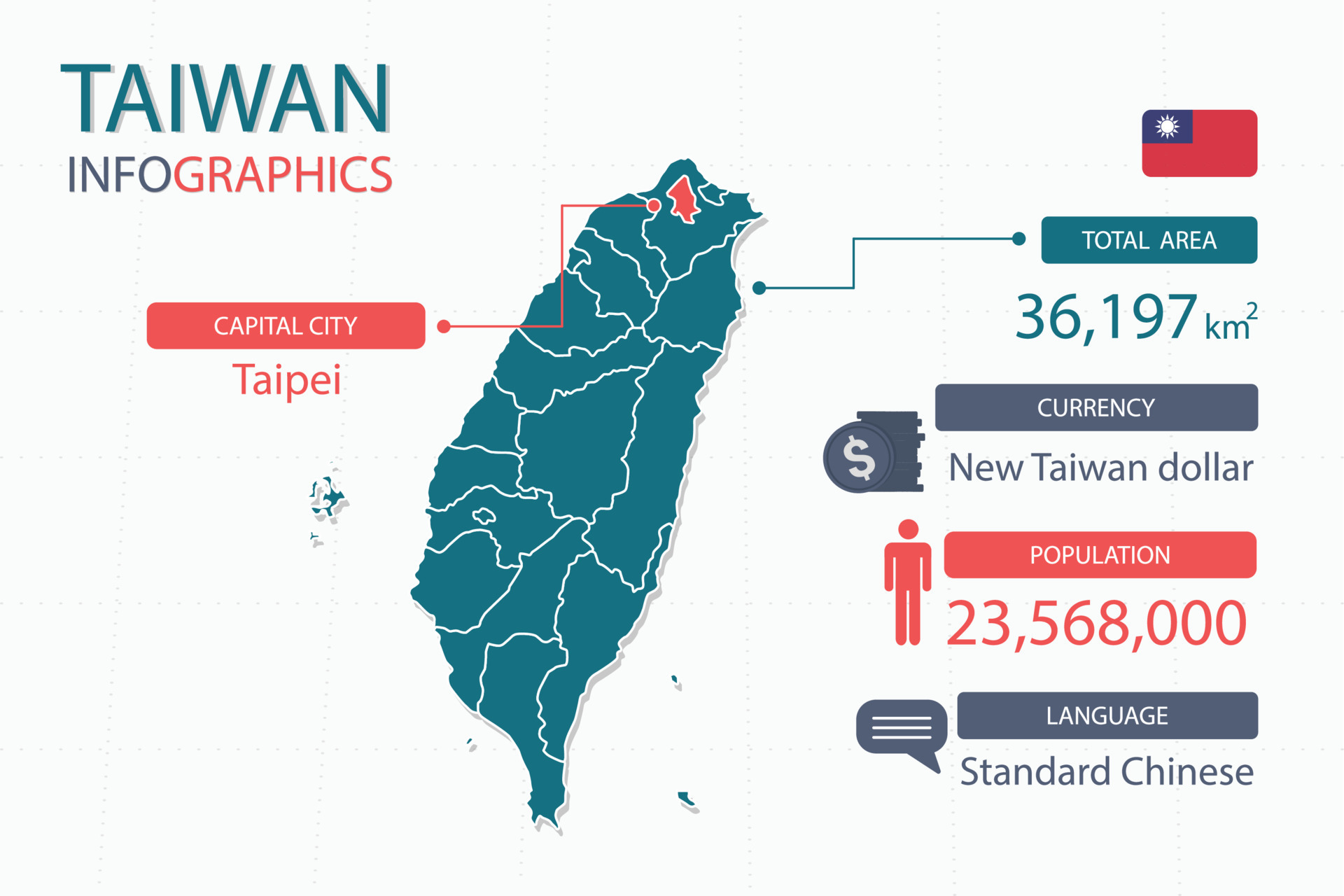Taiwan country language is a topic that weaves together history, culture, and societal dynamics. It is a fascinating subject that invites us to explore the intricate relationship between language, identity, and the shaping of a nation.
The official language of Taiwan, Mandarin Chinese, has played a significant role in shaping the island’s political and social landscape. Yet, the country is also home to a rich tapestry of other languages, each carrying its own cultural and historical significance.
Introduction to Taiwan
/merged-flag-of-china-and-taiwan-507399795-5c611aaa46e0fb0001849ed9.jpg)
Taiwan, officially the Republic of China (ROC), is a sovereign state in East Asia. It is located on the island of Taiwan, which lies off the southeastern coast of mainland China. Taiwan is a mountainous island with a subtropical climate.
The island has a rich history and culture, and is home to a diverse population of over 23 million people.
Taiwan has a unique geopolitical status. It is not recognized as a sovereign state by most countries in the world, including the United Nations. However, Taiwan maintains diplomatic relations with a number of countries, and is a member of several international organizations.
History of Taiwan
The history of Taiwan dates back to the Paleolithic era. The island was inhabited by aboriginal tribes for thousands of years before the arrival of Han Chinese settlers in the 17th century. Taiwan was ruled by the Qing dynasty of China from 1683 to 1895, when it was ceded to Japan after the First Sino-Japanese War.
Japan ruled Taiwan for 50 years, during which time it underwent significant economic and social development. After World War II, Taiwan was returned to China. However, the Chinese Civil War soon broke out, and the ROC government retreated to Taiwan in 1949.
Since then, Taiwan has been ruled by the ROC government. The ROC government claims to be the legitimate government of all of China, but it only controls Taiwan and a few small islands. The PRC government claims that Taiwan is a province of China, and it has threatened to use force to unify Taiwan with the mainland.
Geography of Taiwan
Taiwan is a mountainous island with a subtropical climate. The island is located on the western edge of the Pacific Ocean, and it is surrounded by the Taiwan Strait to the west, the East China Sea to the north, and the South China Sea to the south.
Taiwan is divided into two main regions: the mountainous eastern region and the flatter western region. The eastern region is home to the Central Mountain Range, which runs the length of the island. The western region is home to the Taipei Basin, which is the most populous area of Taiwan.
Taiwan has a subtropical climate, with hot, humid summers and mild winters. The island is also prone to typhoons, which can cause significant damage.
Culture of Taiwan
Taiwan is a culturally diverse country. The island has been influenced by a variety of cultures, including Chinese, Japanese, and Western cultures. Taiwan is also home to a number of indigenous tribes, who have their own unique cultures.
Taiwanese culture is known for its hospitality, its love of food, and its respect for tradition. Taiwan is also a major center of arts and culture. The island is home to a number of museums, theaters, and art galleries.
Official Language of Taiwan

The official language of Taiwan is Mandarin Chinese, also known as Guoyu, which means “national language”. It is a standardized form of the Chinese language based on the Beijing dialect and is the official language of the Republic of China (ROC).
The history of Mandarin Chinese as the official language of Taiwan dates back to the early 20th century. After the ROC was established in 1912, the government adopted Mandarin Chinese as the official language to promote national unity and facilitate communication between different regions of the country.
Role in Government
Mandarin Chinese is the primary language used in government proceedings, official documents, and laws. All government officials are required to be proficient in Mandarin Chinese, and it is the language of instruction in government schools and universities.
Role in Education, Taiwan country language
Mandarin Chinese is the primary language of instruction in schools in Taiwan, from elementary to university level. Students are required to learn Mandarin Chinese as part of the national curriculum, and it is the language used in textbooks and examinations.
Role in Media
Mandarin Chinese is the dominant language in the media in Taiwan. Most television and radio broadcasts are in Mandarin Chinese, and it is the language used in newspapers, magazines, and online news outlets.
Other Languages Spoken in Taiwan
In addition to Mandarin Chinese, the official language of Taiwan, several other languages are spoken throughout the country. These languages reflect the diverse cultural and historical influences that have shaped Taiwan’s identity.
The most widely spoken non-Mandarin language in Taiwan is Taiwanese Hokkien, also known as Southern Min. Hokkien is a Sinitic language spoken by approximately 70% of the population and is particularly prevalent in southern and central Taiwan. It is the native language of the majority of Taiwanese people and has a rich literary and cultural tradition.
Hakka
Hakka is another Sinitic language spoken by approximately 15% of the population. Hakka speakers are concentrated in northern and central Taiwan, and their language has a unique vocabulary and grammar that distinguishes it from Mandarin and Hokkien.
Formosan Languages
In addition to Sinitic languages, Taiwan is also home to a number of indigenous Formosan languages. These languages are spoken by the island’s indigenous peoples, who have a long and rich history in Taiwan.
There are 16 officially recognized Formosan languages, each with its own unique grammar and vocabulary. These languages are spoken by a small but significant portion of the population, and they play an important role in the cultural identity of Taiwan’s indigenous communities.
Other Languages
In addition to the languages mentioned above, there are also a number of other languages spoken in Taiwan, including Japanese, English, and various Southeast Asian languages. These languages are spoken by immigrants and expatriates from around the world, and they reflect the diverse and cosmopolitan nature of Taiwanese society.
Language Policy and Education: Taiwan Country Language
Taiwan’s language policy aims to preserve and promote the nation’s linguistic diversity while fostering social cohesion and global competitiveness.
Language education in Taiwan plays a crucial role in shaping the nation’s cultural identity and equipping its citizens with the skills necessary for success in the globalized world.
Challenges and Opportunities in Language Education
Taiwan’s language education system faces challenges such as the need to balance the preservation of indigenous languages with the promotion of Mandarin as the official language, as well as the increasing influence of English as a global language.
However, these challenges also present opportunities for Taiwan to develop innovative approaches to language education, fostering multilingualism and intercultural understanding.
Language and Cultural Identity
Language plays a crucial role in shaping and preserving cultural identity. In Taiwan, the relationship between language and cultural identity is complex and multifaceted.
The use of the Mandarin language, which is the official language of Taiwan, has been a subject of debate and controversy. While Mandarin is seen as a symbol of national unity and economic development, some argue that it has led to the marginalization of other languages and cultures in Taiwan.
Preserving and Promoting Taiwanese Culture
In recent years, there has been a growing movement to preserve and promote Taiwanese culture, including its languages. This movement has led to the establishment of language schools and cultural centers dedicated to teaching and promoting Taiwanese languages.
The use of Taiwanese languages in media and education has also been increasing. For example, there are now several television channels and radio stations that broadcast in Taiwanese languages. Additionally, some schools in Taiwan now offer classes in Taiwanese languages.
Impact of Globalization and Modernization
Globalization and modernization have had a significant impact on language and cultural identity in Taiwan. The increased exposure to foreign cultures and languages has led to the adoption of new words and phrases into Taiwanese languages.
However, globalization has also led to the decline of some Taiwanese languages. For example, the use of the Hakka language has been declining in recent years due to the influence of Mandarin and other languages.
Language and Society

Language plays a pivotal role in Taiwanese society, shaping communication, social interaction, and power dynamics. It influences social cohesion and integration, contributing to a shared sense of identity and cultural heritage.
Language in Communication and Social Interaction
Language serves as a primary means of communication in Taiwan. Mandarin Chinese, the official language, is widely spoken and understood, facilitating interaction across different regions and social groups. However, other languages, such as Taiwanese Hokkien, Hakka, and various indigenous languages, are also spoken, contributing to linguistic diversity and cultural richness.
Language and Power Dynamics
Language can reflect and reinforce power imbalances within society. Mandarin Chinese, as the official language, holds a dominant position in education, government, and the media. This dominance may create barriers for speakers of other languages, potentially limiting their access to opportunities and resources.
Language and Social Cohesion
Language plays a crucial role in fostering social cohesion and integration in Taiwan. Shared linguistic experiences, such as speaking the same language or dialect, can create a sense of belonging and unity among individuals. Language also serves as a vehicle for cultural transmission, preserving and transmitting traditions, values, and beliefs across generations.
Language and Technology

The advent of technology has significantly impacted language use in Taiwan. It has revolutionized communication, facilitated language learning, and provided new opportunities for language preservation and development.
Role of Technology in Language Learning
Technology has become an indispensable tool for language learners in Taiwan. Online language learning platforms, mobile apps, and interactive software provide personalized learning experiences, allowing users to study at their own pace and focus on areas where they need the most improvement.
- Duolingo, Memrise, and Babbel are popular online language learning platforms that offer gamified lessons and interactive exercises.
- Mobile apps like HelloTalk and Tandem connect language learners with native speakers for real-time conversations.
- Virtual reality (VR) and augmented reality (AR) technologies provide immersive language learning experiences, allowing users to interact with native speakers and practice in realistic scenarios.
Technology in Communication
Technology has transformed the way people communicate in Taiwan. Instant messaging apps like LINE and WhatsApp have become ubiquitous, enabling real-time text, voice, and video communication across different languages.
- LINE is the most popular instant messaging app in Taiwan, with over 20 million active users.
- Social media platforms like Facebook and Instagram allow users to connect with people from diverse linguistic backgrounds, facilitating cross-cultural communication.
- Video conferencing tools like Zoom and Microsoft Teams have become essential for business and educational purposes, enabling remote communication and collaboration.
Technology for Language Preservation
Technology has also played a crucial role in preserving and revitalizing endangered languages in Taiwan. Digital archives, online dictionaries, and language learning resources have been developed to document and promote these languages.
- The National Museum of Prehistory has created an online database of over 100,000 words from endangered Formosan languages.
- The Council of Indigenous Peoples has launched an online dictionary of Atayal, one of the most widely spoken indigenous languages in Taiwan.
- Language revitalization projects use social media and mobile apps to engage younger generations and promote the use of indigenous languages.
Challenges and Opportunities
While technology offers numerous benefits for language use in Taiwan, it also poses certain challenges. The rapid pace of technological change can lead to language obsolescence and the erosion of traditional communication practices.
- The widespread use of Mandarin Chinese in digital media can marginalize minority languages and contribute to their decline.
- Excessive reliance on technology for communication can lead to a decrease in face-to-face interactions and a loss of interpersonal communication skills.
- The digital divide can limit access to technology and language learning resources for certain populations, exacerbating linguistic inequalities.
Despite these challenges, technology also presents significant opportunities for language preservation and development in Taiwan. By embracing technological advancements and implementing innovative language policies, Taiwan can harness the power of technology to promote linguistic diversity and ensure the vitality of all languages spoken in the country.
Language and the Future of Taiwan
The future of language in Taiwan is a complex and multifaceted issue that will be shaped by a variety of factors, including globalization, technological advancements, and demographic changes.
One of the most significant factors that will shape the future of language in Taiwan is globalization. As Taiwan becomes increasingly integrated into the global economy, there will be a growing need for people to be able to communicate in English and other international languages.
This will likely lead to a decline in the use of Taiwanese and other local languages in some domains, such as business and education.
Technological advancements will also play a major role in shaping the future of language in Taiwan. The development of new technologies, such as machine translation and artificial intelligence, could make it easier for people to communicate across language barriers. This could lead to a decline in the use of local languages in some domains, such as news and entertainment.
Demographic changes will also have an impact on the future of language in Taiwan. The population of Taiwan is aging, and there is a growing number of people who are not native speakers of Taiwanese. This could lead to a decline in the use of Taiwanese in some domains, such as the family and community.
The future of language in Taiwan is uncertain, but it is clear that a number of factors will shape its development. These factors include globalization, technological advancements, and demographic changes.
Language Policy and Education
The language policy of Taiwan has a significant impact on the future of language use in the country. The current policy, which was adopted in 1987, promotes the use of Mandarin Chinese as the official language of Taiwan. However, the policy also recognizes the importance of Taiwanese and other local languages, and it provides for their use in certain domains, such as education and media.
The implementation of the language policy has been uneven. Mandarin Chinese is the dominant language in most domains, but Taiwanese and other local languages are still used in some domains, such as the family and community. There is a growing movement to promote the use of Taiwanese and other local languages, and it is possible that the language policy will be revised in the future to give these languages greater recognition.
Implications for the Future of Taiwan
The future of language in Taiwan has a number of implications for the future of the country. First, the decline of local languages could lead to a loss of cultural diversity. Second, the rise of Mandarin Chinese could lead to a decline in the use of Taiwanese and other local languages in the family and community.
Third, the need for people to be able to communicate in English and other international languages could lead to a decline in the use of local languages in business and education.
It is important to note that these are just some of the potential implications of the future of language in Taiwan. The actual impact of these changes will depend on a number of factors, including the implementation of the language policy, the development of new technologies, and the demographic changes that occur in the country.
Summary
As Taiwan navigates the challenges and opportunities of the 21st century, its linguistic landscape will continue to evolve. The interplay of globalization, technology, and cultural preservation will undoubtedly shape the future of Taiwan country language. Understanding this dynamic landscape is crucial for appreciating the complexities of Taiwanese society and its place in the global community.
FAQ Corner
What is the official language of Taiwan?
The official language of Taiwan is Mandarin Chinese.
What other languages are spoken in Taiwan?
Besides Mandarin Chinese, other languages spoken in Taiwan include Taiwanese Hokkien, Hakka, and various indigenous languages.
How does language shape cultural identity in Taiwan?
Language plays a vital role in preserving and promoting Taiwanese culture. It is a vehicle for transmitting cultural values, traditions, and beliefs.